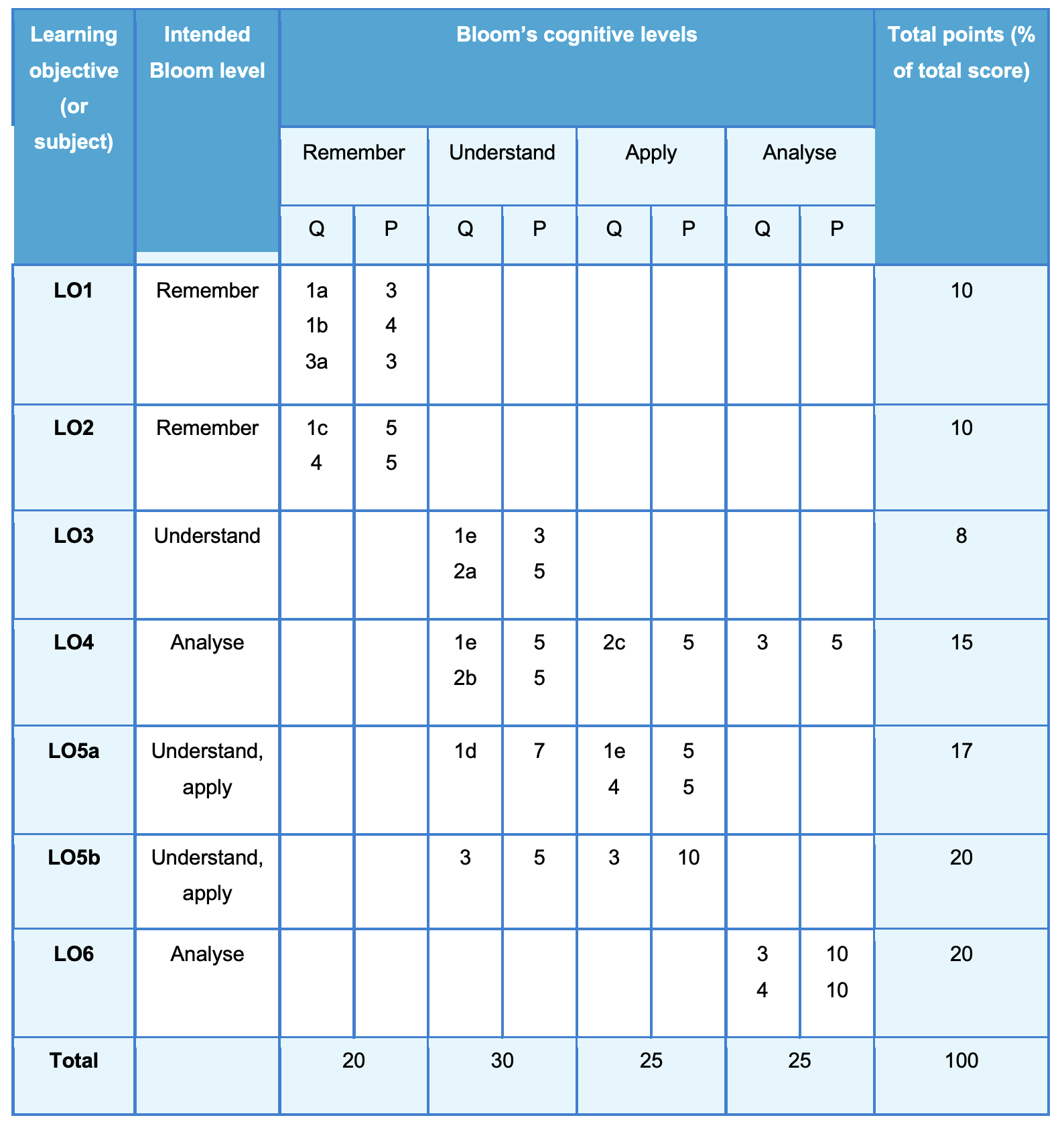These tips and tricks have been written by learning developers at Teaching & Learning Services, ESA.
Table of contents
Why adapt exam questions to remote exams?
In remote exams, the risk of fraud is higher than for on-campus exams. Therefore, you need to change multiple-choice questions, true-false questions and other closed-ended questions to open-ended questions. In general, the advice is to reconstruct your exam into an open-book exam. This implies that you cannot use questions that require learning-by-heart.
Only in the case of proctored written exams and oral exams, you can ask questions on factual knowledge. The reason is that in that case, students are continuously monitored. However, it is still best practice not to use multiple-choice questions at all.
How to write exam questions?
So you are about to rewrite your questions to open-ended questions. Watch this video or read the following ideas / points to get started:
- Your exam questions should be challenging, interesting, fair and, if possible, fun!
- Exam questions should reflect the learning objectives of the course.
- Identify the action verbs in your learning objectives, and then make sure that your questions cover the same cognitive level (level of difficulty, e.g. remembering vs analysis).
- Make sure you are testing what you promised students would learn. Let them know which course learning objective(s) is/are covered in the exam.
- The learning objectives will also determine the type of exam: for example, would you ask your students to write an essay if you wanted to quickly assess how well they have understood a broad range of topics? Likewise, multiple-choice questions don’t make sense if what you want is students to explain their understanding and demonstrate creativity.
- Write clear instructions; if there’s any ambiguity in what they need to do, students will struggle.
- Ask a colleague to proofread your questions.
- Simplicity is best! Don’t write complex sentences, or use idiomatic language that students may find difficult to understand (there are a lot of international students in TUD!).
- To test a deeper level of understanding and insight, ask the students to justify their answers.
- You can also write a case study (real-world examples) and ask a couple of short questions on the case to test.
- Ask your students what kind of questions they would expect to see in the exam.
Ideas for short-answer and essay questions
If you are doing short-answer essays or extended essays, these are subjective and allow students to organize their arguments and mostly present an original answer. You will be giving them a lot of freedom to respond, but in return, essay questions are always more difficult and time consuming to mark. You will be asking your students to analyse, classify, compare and contrast, define, give an example, discuss, summarise, and so forth.
- Don’t focus on snippets of content. Try to put the questions in context so that the students can see how the knowledge is used in the real world.
- Always include the point allocation for every answer, and/or include an estimate of how much time they should be spending on the task.
- Indicate on what criteria and aspects you will be marking their answer and if some aspects will have a higher weight than others.
- Give instructions on the expected length of the answer, or number of arguments you expect them to bring up.
What is the structure of any open exam questions?
When constructing exam questions, use the following 3-part structure:
| Use a 3-part Structure |
|
| Directions for answering |
|
| Context and question should be linked |
|
Use tools to check your exam and question quality
Use tools to check your exam and question quality
You can use an assessment matrix (for an example, see Table 1) to check whether the division of questions over the learning objectives (or topics) is in line with the time spent on this learning objective / topic during the course. Furthermore, it can help you to check whether the level of Bloom of the questions is in line with the level of Bloom of the learning objectives. This is a tool to ensure validity and constructive alignment (see this video on constructive alignment) of your exam.
Table 1: Assessment matrix for an existing exam based on the learning objectives listed previously. Q = (sub)question number, P = points per (sub)question.
Click to download the Assessment Matrix Template (word document)
Use the checklist for reviewing your exam questions
Information for students on the exam
- During the test/assignment, are the points to be earned by each question or subquestion announced? This way students can budget their time to be most impactful for them. They should not spend a lot of time on a question that will not earn them a lot of points.
- Before taking the test/assignment, do students know ahead of time what will be on the test both in structure and in content?
- Before taking the test/assignment, did your students get experience with the types of questions with which you will be testing?
- After getting the grade and feedback, does the student get information on how her grade has been calculated, and on how she can improve her performance, for example per learning objective, criterion or subquestion?
Layout / language of the exam
- Is the layout clear?
- Are the figures clear?
- Are there any spelling errors or typos?
- Have double negatives been avoided? Is the question concisely formulated?
- Are there any copy-paste errors?
Question quality
- Is the answer model in line with what the test questions ask?
- Is the question unambiguous and is it clear what is being asked?
- Is the tested knowledge or skill necessary to answer the question?
- Do not try to cover more than one learning objective in the same subquestion.

